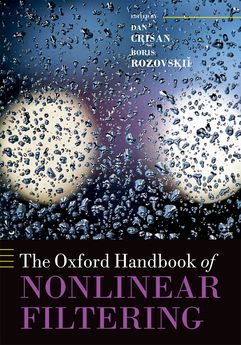
The celebrated Kalman-Bucy filter, designed for linear dynamical systems with linearly structured measurements, is the most famous Bayesian filter. Its generalizations to nonlinear systems and/or observations are collectively referred to as nonlinear filtering (NLF), an extension of the Bayesian framework to the estimation, prediction, and interpolation of nonlinear stochastic dynamics. NLF uses a stochastic model to make inferences about an evolving system and is a theoretically optimal algorithm.
The breadth of its applications, firmly established and still emerging, is simply astounding. Early uses such as cryptography, tracking, and guidance were mostly of a military nature. Since then, the scope has exploded. It includes the study of global climate, estimating the state of the economy, identifying tumours using non-invasive methods, and much more.
The Oxford Handbook of Nonlinear Filtering is the first comprehensive written resource for the subject. It contains classical and recent results and applications, with contributions from 58 authors. Collated into 10 parts, it covers the foundations of nonlinear filtering, connections to stochastic partial differential equations, stability and asymptotic analysis, estimation and control, approximation theory and numerical methods for solving the nonlinear filtering problem (including particle methods). It also contains a part dedicated to the application of nonlinear filtering to several problems in mathematical finance.
-
R 5,600.00
- EMAIL US
- OUT OF STOCK
- Download Catalogue